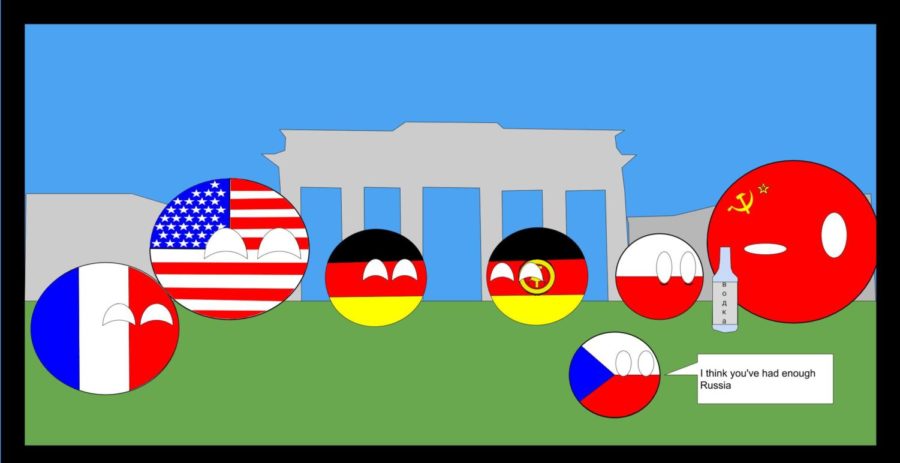Berlin Wall Falls
November 20, 2019
On Nov. 9, 1989, the wall that once towered over East and West Berliners would be undone. Finally, citizens from both sides, after 28 years, would see Germany reunited.
The Berlin Wall was put up by the Soviets in 1961 to separate East Berlin from the West. The reason for this was to block the flocks of East Berliners from leaving the East to migrate to the West. Similar trends were also happening in Czechoslovakia, Hungary, and Yugoslavia, with many people leaving these Eastern Bloc countries, where life was harsh, and weakening their workforces. Many would die trying to emigrate, or if caught would be sent back and punished.
Leaders such as former British Prime Minister Winston Churchill and President John F. Kennedy were quite outspoken about the wall, with Churchill claiming it an “Iron Curtain” that split Europe. Kennedy claimed that “Democracy is not perfect, but we never had to build a wall to keep our people in.”
Decades later, in the USSR, the new and last leader, Mikhail Gorbachev, was more open-minded than past Soviet leaders. He allowed for more freedom in the Soviet Union. People were allowed to criticize the government and could enjoy Western culture without punishment. With this huge change, nations of the Eastern Bloc requested freedom from Soviet occupation. Gorbachev did not say he would suppress these reforms, but he also did not support them.
One by one, countries such as Czechoslovakia, Hungary, and Poland all held elections for new leaders and seceded from the USSR, no longer “satellite states.” Germany also was on the way to reform with President Ronald Reagen requesting Gorbachev to “tear down this wall.”
Krushchev agreed to allow it, and on the night of Nov. 9, East Berliners started to enter the West. The guards were overwhelmed. East and West would celebrate through the night for the reunification of Germany, and the wall that once displayed great tyranny fell.


